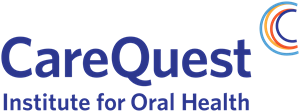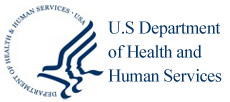The most sparsely populated regions of the American West often are unable to provide local treatment for opioid use disorder. Long driving distances can be a barrier for people who need treatment, so the issue has ramifications for the health and wellness of many residents across the most rural areas of the country.
A team of researchers from Penn State and JG Research and Evaluation recently examined the effectiveness of a successful model for rural treatment of opioid use disorder in Montana, one of the nation’s most sparsely populated states.
Opioids are highly addictive, and opioid use disorder is difficult to treat. Fortunately, many people who experience opioid use disorder can reach recovery. Most treatment programs, however, are very intensive and require specialized care, highly regulated medication, and daily or weekly clinical visits. Because of this intensive specialization, people in rural areas who experience opioid use disorder often lack access to local treatment.
To address the lack of services for people with opioid use disorder in rural areas, researchers and clinicians in Vermont developed a model of care for opioid treatment. People with opioid use disorders from remote areas are stabilized at addiction care facilities in more populous areas and then receive ongoing care at rural primary care clinics that have established partnerships with these addiction care facilities. Based on this model’s success in Vermont, it has been deployed in many rural areas across the nation.
Danielle Rhubart, assistant professor of biobehavioral health at Penn State, co-authored an article in the journal Substance Abuse: Research and Treatment that evaluated the application of the Vermont model in Montana.
“There are people in Montana who have to drive 100 or even 200 miles one way to reach a physician who can prescribe medical treatments for opioid use disorder,” Rhubart explained. “This is fundamentally very different from Vermont, which is only about 80 miles wide. The model that is used in Vermont has been very successful, and a lot of good science has validated it. We needed to know, however, whether what worked in Vermont was applicable in a state as remote as Montana.”
The researchers found that the Vermont model was not successfully adopted in Montana. Addiction care facilities in Montana were often unsuccessful at forming partnerships with rural primary care offices. The rural providers who were interviewed for this research were concerned about a variety of interrelated issues.
Geographic concerns were one of the reasons that primary care physicians were reluctant to enter into addiction-care partnerships. The total area of Montana is nearly 150,000 square miles, while the area of Vermont is less than 10,000 square miles. Though Montana is home to more people, there are between nine and 10 times as many people per square mile in Vermont as there are in Montana. Prior research has shown that there are important differences between rural areas that are adjacent to urban areas compared with rural areas that are distant from urban areas. People in more remote rural areas, like most of Montana, are much less likely to have access to a variety of services. Physicians were concerned that the lack of trained staff who lived in their area would make implementing the program impractical.
The lack of available staff was cited by some rural primary care physicians as a reason not to participate in opioid use disorder treatment programs. According to the researchers, behavioral health services are more widely available in Vermont than in rural Montana. This lack of medical staff and support services led many rural health care providers in Montana to believe that they would be unable to recruit and retain staff to run an opioid use disorder treatment program.
Some rural providers in Montana reported that they did not want to participate in treatment because they were concerned that the demand would overwhelm their capacity to provide high quality care. Primary care facilities in some of the most rural and remote portions of the state cited the lack of available behavioral health staff in the area as a reason to suspect that, if they started an opioid use disorder program, they would not be able to address their patients’ needs.
In addition, there is a stigma associated with treating people with opioid use disorder in some rural areas, and some physicians expressed fear that they would lose patients if they prescribed these medications.
“The differences between Vermont and Montana go beyond population density,” Rhubart explained. “Cultures differ too. In our study, we found that some rural physicians’ offices in Montana preferred an informal relationship with addiction-treatment facilities to a formal partnership. Rural providers welcomed technical assistance, but were hesitant to formalize long-term partnerships.
One of the most significant barriers to treating opioid use disorder in rural areas is the special license required for prescribing the appropriate medication. There is concern that the medication could be abused as a street drug, so it is highly regulated. In addition, physicians expressed concerns that the Vermont model would not be financially viable for their practices.
This research shows that for treatment of opioid use disorder — and other health issues — there is no one-size-fits-all solution for rural areas.
“When states develop treatment models for opioid use disorder, public health officials must account for local variations in culture, stigma, and access to resources so that rural physicians are not overwhelmed by the prospect of treating people in need,” Rhubart explained. “Program and partnership buy-in from physicians requires attention to the geographic, economic, and cultural norms of a community. These factors are essential for developing care models that effectively support those with opioid use disorder.”



